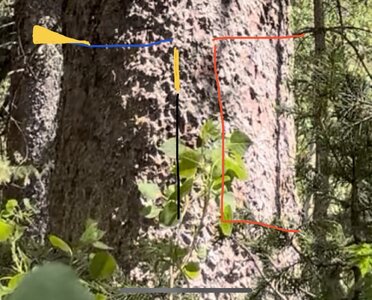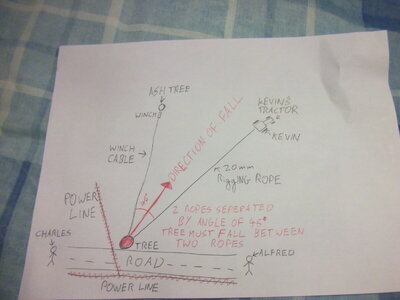- Local time
- 1:16 AM
- User ID
- 5156
- Joined
- Jan 24, 2018
- Messages
- 9,529
- Reaction score
- 37,701
- Location
- Extreme Southeast CA
What about those old fashioned humboldt cuts where the face consists of two parallel cuts and then a "snipe" on the lower cut to let the butt of the log slide off the stump? Aren't they meant to expose more hingewood to allow the tree to hold on and not break off until the last minute to stop the log smashing itself on the ground? I wonder would something like that work here in my situation?
Yes, those originated in redwood and cedar I think which are soft but brittle. Having an open/gap face is always good for brittle and barber chain prone stuff. You don’t want the face closing. I think @chiselbit calls it having a “tall back wall” to the face. The hinge (theoretically) splits away from the stump and bends. For brittle wood the hinge needs to be thin, but (there are a lot of buts) too thin and it will just break off at the top instead of peeling away. I have vertically plunge cut the back of the hinge to free it from the stump but, but it is easy to get your angles off plunging thru the tree. I had an idea the other day to just vert plunge in a few inches on either side and drive wedges in there as well as the back cut to separate the hinge from the stump. The hinge also needs to be thick enough to support the weight of the tree to some extend. Some of the eucs I cut were very heavy and it appeared they were crushing the hinge as they went. I think a thin hinge is more appropriate for dead dry light brittle wood…and nothing is guaranteed with those.
This one I cut the hinge too thin, it broke at the top instead of peeling. Was going with the lean anyway. Probable would have been better to leave the hinge thick and gut it.
First one I vert plunged, second one I didn’t.
Skip to 7:30, this one probably hinged the best.
@Stihlalltheway
Last edited:
































